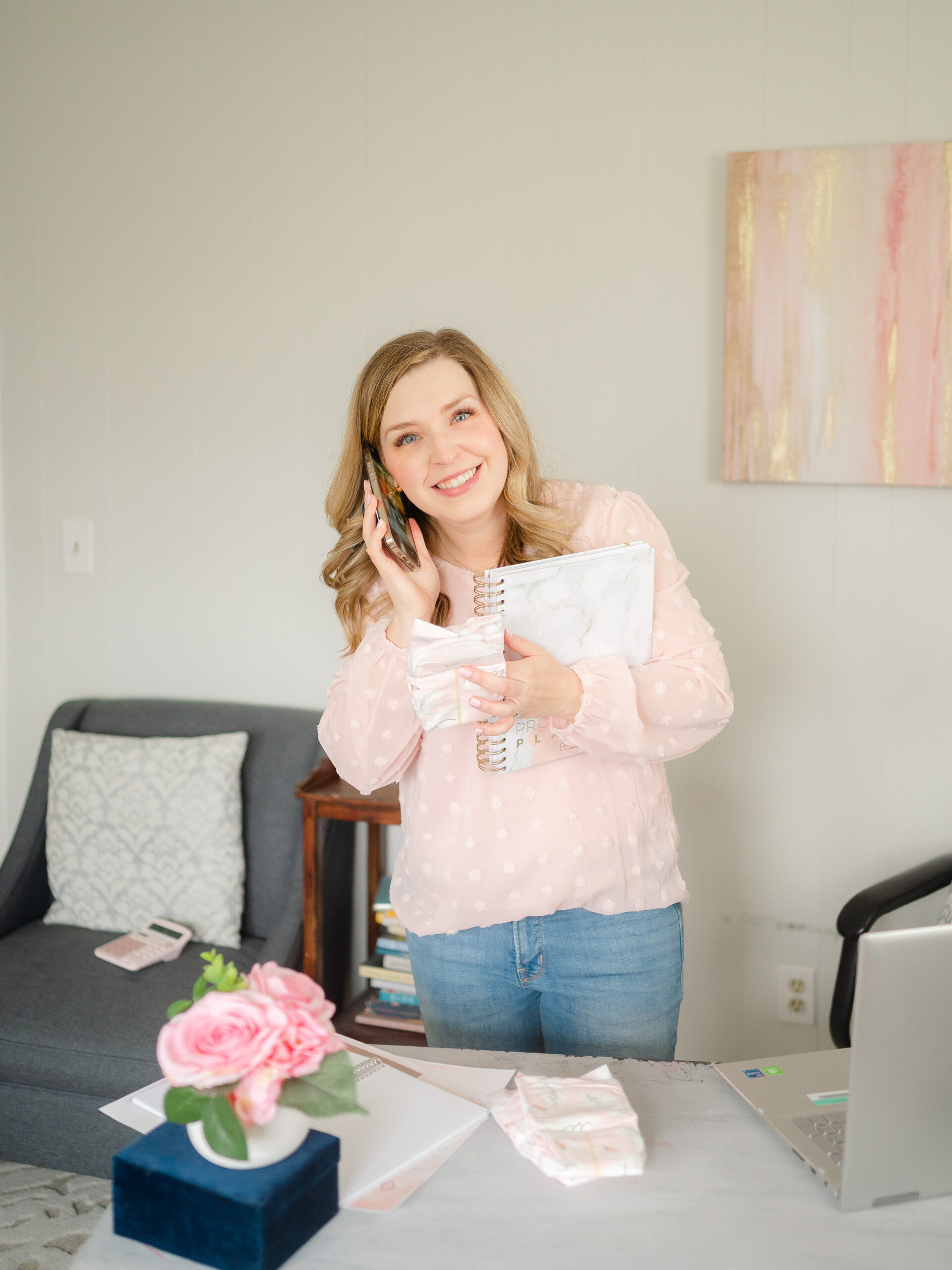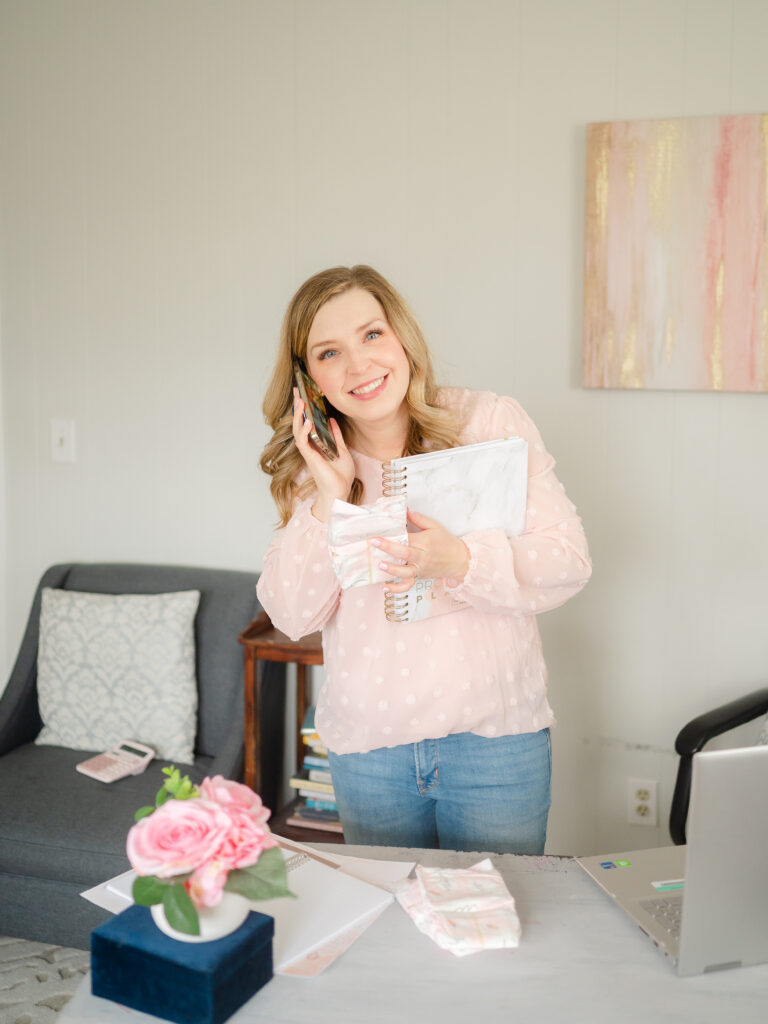
Still Stuffing Receipts in an Envelope? 3 Ways to Manage Receipts Instead

Do you have a junk drawer in your house? Maybe more than one. You know that place where you just shove random crap and hope it disappears or goes away. Or maybe you want to keep something, but you just don’t have a better place to store it. So it goes in the junk drawer. Working with business owners, I found that managing receipts can be much like that junk drawer. I’m going to teach you 3 ways to manage receipts in your business.
If you’re like most business owners, receipts get shoved either into an envelope or Ziplock bag to deal with later. But, there are several ways to manage your receipts better than this. So if you are an envelope stuffer of receipts, keep reading! I’m going to give you a lot of ideas on how to better manage those receipts.
But first, I want to jump into a few FAQ’s and common misconceptions about receipts. I hear a lot of questions about them whenever I bring this topic up.
Do I still need to keep a receipt if the charge was on my credit card or debit card?
The answer is yes. Just because you have the record on a card or a statement does not mean you don’t have to keep your receipt. That is a big one for a lot of people.
I found it straight from the IRS. They want details on those specific purchases. Their job is to make sure that those charges were actually for business purposes and not just something that you’re using for personal, but trying to claim it as a business expense. And that’s why they want to see details of those charges and those purchases. They want to verify that it was actually for business purposes.
Just having the Amazon charge on your credit card, doesn’t give them any detail about what type of purchase that was. And so that’s the reason that you need to keep receipts even if you’re using it as a charge on a credit card.
Which receipts do you even need to keep?
Now, this is a big question. The IRS website says to keep everything. Sometimes that’s overwhelming to business owners. My advice is best practice is to keep every receipt that you have. Some of them are a little bit trickier than others. And what I mean by that is sometimes we shop at Amazon or Walmart for office supplies. That is a lot harder to rationalize that that was for business purposes, than something like your email service provider subscription or your CRM subscription. If it becomes too overwhelming to keep every receipt, especially pay attention to the ones that would be a little more questionable, a little more gray. Those are the kinds of ones that you specifically want to pay attention to and have the details for because it’s pretty easy.
If you’re a FloDesk user, you could go to the FloDesk website, look at their pricing plans, and see what their subscription is. Then, able to prove this is what I’m paying every month if you didn’t have the receipt for that. But it’s a lot harder to do that for those Amazon type purchases that we were just talking about.
So, the best practice keep all receipts, especially the ones that could be a little trickier to rationalize.
Do I need to keep hard copies or paper receipts?
Thankfully, the answer to this is no. If you take a picture of it and save that as a file or if you have an electronic PDF, that is fine. In today’s day and age, you can have an electronic version.
You don’t have to keep all of the papers if you don’t want to. Some of my clients still like to stuff that envelope and just have it saved for later, even though they have a copy or a picture of it. But you do not have to print all those receipts off if you don’t want to.
Now let’s jump into different ways to manage your receipts.
I want to get your creative juices flowing. To give you some ideas of different ways you can handle it. Then you can take what advice you want from this and run with it.
Instead of keeping all of those papers, here are a few things you can do.
Google Drive folder to manage receipts
Create a specific folder for receipts in your Google Drive. The best practice would be to do this by year and then by month. This way you can easily get back to it and find something and not just have to dig through a whole year’s worth or a whole few year’s worth of folders of different receipts.
This way you can take a picture of it, email it to yourself, and then throw it in that Google Drive folder. You can also download PDFs straight into your computer and then upload them straight into that Google Drive folder. So that is one way.
Folder on your desktop to manage receipts
So similar thing, one thing you could do would just be on the cloud versus your hard drive. But again, taking a picture of the paper, receipts, downloading the PDFs, or taking a screenshot of an email, anything like that would work as a photo and then putting it into those folders so that you have it organized and saved for later. And easily able to access. That is the key here, because if you were, for some reason to ever get audited, you want to have it stored easily, ready to pull up and give to the auditor when they ask for it.
Use the QuickBooks app to manage receipts
If you’re a QuickBooks user, the QuickBooks app has a feature for this that is convenient. So let’s say you’re at a business retreat, and you have travel, meals, parking receipts, etc where you’ll generate receipts. Instead of shoving them into your bag, you can take a picture in QuickBooks and it will upload it straight into QuickBooks for you.
And then the cool thing about QuickBooks is that we’ll try to match it to those charges when they come through. What I mean by that is that you can store all of the photos of the receipts with that exact transaction in QuickBooks. So when you click on that expense for your parking pass then you can click into that expense and at the bottom, you’ll see an attachment of the picture of the receipt.
So that’s another really simple way to have it all in one system and not manage all these different systems. If you’re not a QuickBooks user yet, make sure you reach out to me before you start using QuickBooks. I’ll help you get the best discount that’s available.
I hope this got you thinking of some simpler ways to manage receipts going forward. You know, if you haven’t been managing your receipts very well up until now. Just give yourself a little grace. What’s done is done. Sometimes there’s not much you can do going backwards. Try to create a new plan for going forward so that is simple, easy, and not a lot of upkeep. That’s what we’re going for here.
Now it is time to jump into the financial jargon section.
Today, we are going to be talking about accounts receivable and accounts receivable aging reports.
Receivables are just a fancy way of saying somebody else owes you money for something. Let’s say that you invoice a client, but they haven’t paid it yet. That is going to show up in your accounts receivable category.
Now a lot of online business owners may not have this problem because you invoice and you don’t allow people to book until they’ve paid that invoice right away. But if you have anything that you bill ahead of time, that people are still owing you, then that is going to show up as a receivable. You’ll see that on your balance sheet, under the asset section, because it is a future benefit to you that somebody is going to be paying you cash in the future. That’s why we see it in the asset category once that person pays their invoice.
Now an aging report is just a fancy report that shows all of the people who owe you money and how many days has it been since their invoices. Typically, you’ll see it broken down into 30-day sections.
You’ll see the most current ones being one to 30 days of balance outstanding. Then the next 30 to 60, 60 to 90, etc. That is what an aging report shows. It is just the total of all the money that people owe you and how many days it’s been since you sent that invoice. So, that is a great report to run every once in a while, maybe every quarter, just so that you can see, the people that have owed you money that you haven’t collected.
If you have people there, you can send them a few more emails and get on top of making sure that those numbers stay pretty low. That’s what we’re hoping for is that we don’t have large outstanding balances.
Hopefully, that helps give a little more guidance and explanation around accounts receivable and then an accounts receivable aging report.
As always reach out to me if you have any questions about anything we talked about. I love hearing from you. Thanks for being here!
Listen to this episode!